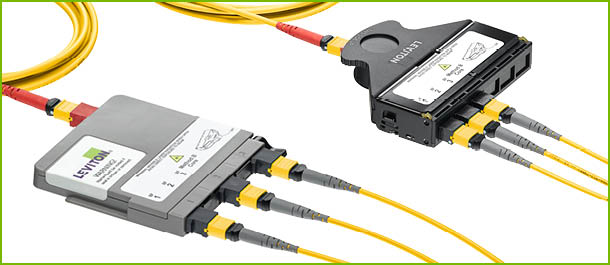New IEEE Standard Brings 200 Gb/s and 400 Gb/s to Data Centers

After four years in committee, the IEEE 802.3bs fiber standard for 200 and 400 Gb/s networks was approved yesterday. The new standard is the first to address these speeds, and provides important guidance for data center managers building a network migration plan that spans multiple tech refreshes.
IEEE 802.3bs Media Access Control Parameters, Physical Layers and Management Parameters for 200 Gb/s and 400 Gb/s Operation includes a range of ways to deliver 200 and 400 Gb/s over single-mode fiber using duplex or parallel options. The standard also includes one multimode variant, although it is expected to see little deployment as the industry-wide move to single-mode for higher speeds will likely leapfrog this technology.
The new standard supports:
- 200GBASE‐DR4: 200 Gb/s using 200GBASE‐R Encoding and 4‐level pulse amplitude modulation over four lanes of SM fiber, with reach up to at least 500 m.
- 200GBASE‐FR4: 200 Gb/s using 200GBASE‐R encoding and 4‐level pulse amplitude modulation over four WDM lanes on SM fiber, with reach up to at least 2 km.
- 200GBASE‐LR4: 200 Gb/s using 200GBASE‐R encoding and 4‐level pulse amplitude modulation over four WDM lanes on SM fiber, with reach up to at least 10 km.
- 400GBASE‐DR4: 400 Gb/s using 400GBASE‐R encoding and 4‐level pulse amplitude modulation over four lanes of SM fiber, with reach up to at least 500 m.
- 400GBASE‐FR8: 400 Gb/s using 400GBASE‐R encoding and 4‐level pulse amplitude modulation over eight WDM lanes on SM fiber, with reach up to at least 2 km.
- 400GBASE‐LR8: 400 Gb/s using 400GBASE‐R encoding and 4‐level pulse amplitude modulation over eight WDM lanes on SM fiber, with reach up to at least 10 km.
- 400GBASE‐SR16: 400 Gb/s using 400GBASE‐R encoding over sixteen lanes of MM fiber, with reach up to at least 100 m.
Regardless of the type or size of the data center, IT managers are looking for cabling systems that can weather multiple generations of tech upgrades with minimal disruption, dark fibers, or changes. Leviton’s single-mode and multimode cabling systems not only meet current bandwidth requirements, but also provide the flexibility needed to meet future network demands, including 200 Gb/s, 400 Gb/s, and beyond.
To learn about Leviton fiber solutions, go to Leviton.com/fiber.


